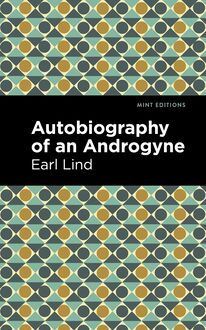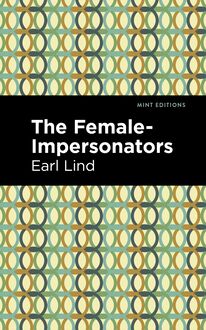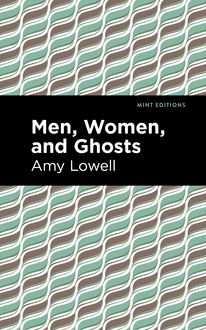-
 Univers
Univers
-
 Ebooks
Ebooks
-
 Livres audio
Livres audio
-
 Presse
Presse
-
 Podcasts
Podcasts
-
 BD
BD
-
 Documents
Documents
-
- Cours
- Révisions
- Ressources pédagogiques
- Sciences de l’éducation
- Manuels scolaires
- Langues
- Travaux de classe
- Annales de BEP
- Etudes supérieures
- Maternelle et primaire
- Fiches de lecture
- Orientation scolaire
- Méthodologie
- Corrigés de devoir
- Annales d’examens et concours
- Annales du bac
- Annales du brevet
- Rapports de stage
La lecture à portée de main
Vous pourrez modifier la taille du texte de cet ouvrage
Découvre YouScribe en t'inscrivant gratuitement
Je m'inscrisDécouvre YouScribe en t'inscrivant gratuitement
Je m'inscrisEn savoir plus
Vous pourrez modifier la taille du texte de cet ouvrage
En savoir plus

Description
A Phantom Lover (1886) is a story by Vernon Lee. Published at the height of her career as a leading proponent of Aestheticism and scholar of the Italian Renaissance, A Phantom Lover is a chilling tale of psychological unease featuring a strange married couple and a doppelganger from across the centuries. A principled feminist and committed pacifist, Lee was virtually blacklisted by critics and publishers following her opposition to the First World War. Through the efforts of dedicated scholars, however, interest in her works has increased over the past several decades, granting her the readership she deserves as a master of literary horror. “Yes; I began the picture, but it was never finished. I did the husband first. I wonder who has his likeness now? Help me to move these pictures away from the wall. Thanks. This is her portrait; a huge wreck. I don't suppose you can make much of it; it is merely blocked in, and seems quite mad.” Vernon Lee’s world is one where ghosts and humans walk together, often without taking notice of one another. In those instances when they do, however, strange and terrible things are likely to occur. In this story, a painter in desperate need of a commission accepts the opportunity to paint the portraits of William and Alice Okehurst. At their rural home, he attempts to get to know them before sitting down for the long sessions required in his line of work. Taking note of William’s jealousy, he soon understands why: Alice is a strikingly beautiful woman. Obsessed with an ancestor from the seventeenth century, also named Alice, Mrs. Okehurst wears ornate antique dresses and carries herself with the air of a woman not quite of this world. A Phantom Lover is a masterful work from the mind of Vernon Lee, one of history’s most terrifying storytellers. With a beautifully designed cover and professionally typeset manuscript, this edition of Vernon Lee’s A Phantom Lover is a classic work of supernatural fiction reimagined for modern readers.
Sujets
Informations
| Publié par | Mint Editions |
| Date de parution | 03 août 2021 |
| Nombre de lectures | 0 |
| EAN13 | 9781513297163 |
| Langue | English |
| Poids de l'ouvrage | 2 Mo |
Informations légales : prix de location à la page 0,0300€. Cette information est donnée uniquement à titre indicatif conformément à la législation en vigueur.
Extrait
A Phantom Lover
Vernon Lee
A Phantom Lover was first published in 1886.
This edition published by Mint Editions 2021.
ISBN 9781513295664 | E-ISBN 9781513297163
Published by Mint Editions®
minteditionbooks.com
Publishing Director: Jennifer Newens
Design & Production: Rachel Lopez Metzger
Project Manager: Micaela Clark
Typesetting: Westchester Publishing Services
C ONTENTS C HAPTER 1 C HAPTER 2 C HAPTER 3 C HAPTER 4 C HAPTER 5 C HAPTER 6 C HAPTER 7 C HAPTER 8 C HAPTER 9 C HAPTER 10
Chapter 1
That sketch up there with the boy’s cap? Yes; that’s the same woman. I wonder whether you could guess who she was. A singular being, is she not? The most marvelous creature, quite, that I have ever met: a wonderful elegance, exotic, far-fetched, poignant; an artificial perverse sort of grace and research in every outline and movement and arrangement of head and neck, and hands and fingers. Here are a lot of pencil sketches I made while I was preparing to paint her portrait. Yes; there’s nothing but her in the whole sketchbook. Mere scratches, but they may give some idea of her marvelous, fantastic kind of grace. Here she is leaning over the staircase, and here sitting in the swing. Here she is walking quickly out of the room. That’s her head. You see she isn’t really handsome; her forehead is too big, and her nose too short. This gives no idea of her. It was altogether a question of movement. Look at the strange cheeks, hollow and rather flat; well, when she smiled she had the most marvelous dimples here. There was something exquisite and uncanny about it. Yes; I began the picture, but it was never finished. I did the husband first. I wonder who has his likeness now? Help me to move these pictures away from the wall. Thanks. This is her portrait; a huge wreck. I don’t suppose you can make much of it; it is merely blocked in, and seems quite mad. You see my idea was to make her leaning against a wall—there was one hung with yellow that seemed almost brown—so as to bring out the silhouette.
It was very singular I should have chosen that particular wall. It does look rather insane in this condition, but I like it; it has something of her. I would frame it and hang it up, only people would ask questions. Yes; you have guessed quite right—it is Mrs. Oke of Okehurst. I forgot you had relations in that part of the country; besides, I suppose the newspapers were full of it at the time. You didn’t know that it all took place under my eyes? I can scarcely believe now that it did: it all seems so distant, vivid but unreal, like a thing of my own invention. It really was much stranger than any one guessed. People could no more understand it than they could understand her. I doubt whether any one ever understood Alice Oke besides myself. You mustn’t think me unfeeling. She was a marvelous, weird, exquisite creature, but one couldn’t feel sorry for her. I felt much sorrier for the wretched creature of a husband. It seemed such an appropriate end for her; I fancy she would have liked it could she have known. Ah! I shall never have another chance of painting such a portrait as I wanted. She seemed sent me from heaven or the other place. You have never heard the story in detail? Well, I don’t usually mention it, because people are so brutally stupid or sentimental; but I’ll tell it you. Let me see. It’s too dark to paint any more today, so I can tell it you now. Wait; I must turn her face to the wall. Ah, she was a marvelous creature!
Chapter 2
You remember, three years ago, my telling you I had let myself in for painting a couple of Kentish squireen? I really could not understand what had possessed me to say yes to that man. A friend of mine had brought him one day to my studio—Mr. Oke of Okehurst, that was the name on his card. He was a very tall, very well-made, very good-looking young man, with a beautiful fair complexion, beautiful fair moustache, and beautifully fitting clothes; absolutely like a hundred other young men you can see any day in the Park, and absolutely uninteresting from the crown of his head to the tip of his boots. Mr. Oke, who had been a lieutenant in the Blues before his marriage, was evidently extremely uncomfortable on finding himself in a studio. He felt misgivings about a man who could wear a velvet coat in town, but at the same time he was nervously anxious not to treat me in the very least like a tradesman. He walked round my place, looked at everything with the most scrupulous attention, stammered out a few complimentary phrases, and then, looking at his friend for assistance, tried to come to the point, but failed. The point, which the friend kindly explained, was that Mr. Oke was desirous to know whether my engagements would allow of my painting him and his wife, and what my terms would be. The poor man blushed perfectly crimson during this explanation, as if he had come with the most improper proposal; and I noticed—the only interesting thing about him—a very odd nervous frown between his eyebrows, a perfect double gash,—a thing which usually means something abnormal: a mad-doctor of my acquaintance calls it the maniac-frown. When I had answered, he suddenly burst out into rather confused explanations: his wife—Mrs. Oke—had seen some of my—pictures—paintings—portraits—at the—the—what d’you call it?—Academy. She had—in short, they had made a very great impression upon her. Mrs. Oke had a great taste for art; she was, in short, extremely desirous of having her portrait and his painted by me, etcetera .
“My wife,” he suddenly added, “is a remarkable woman. I don’t know whether you will think her handsome,—she isn’t exactly, you know. But she’s awfully strange,” and Mr. Oke of Okehurst gave a little sigh and frowned that curious frown, as if so long a speech and so decided an expression of opinion had cost him a great deal.
It was a rather unfortunate moment in my career. A very influential sitter of mine—you remember the fat lady with the crimson curtain behind her?—had come to the conclusion or been persuaded that I had painted her old and vulgar, which, in fact, she was. Her whole clique had turned against me, the newspapers had taken up the matter, and for the moment I was considered as a painter to whose brushes no woman would trust her reputation. Things were going badly. So I snapped but too gladly at Mr. Oke’s offer, and settled to go down to Okehurst at the end of a fortnight. But the door had scarcely closed upon my future sitter when I began to regret my rashness; and my disgust at the thought of wasting a whole summer upon the portrait of a totally uninteresting Kentish squire, and his doubtless equally uninteresting wife, grew greater and greater as the time for execution approached. I remember so well the frightful temper in which I got into the train for Kent, and the even more frightful temper in which I got out of it at the little station nearest to Okehurst. It was pouring floods. I felt a comfortable fury at the thought that my canvases would get nicely wetted before Mr. Oke’s coachman had packed them on the top of the waggonette. It was just what served me right for coming to this confounded place to paint these confounded people. We drove off in the steady downpour. The roads were a mass of yellow mud; the endless flat grazing-grounds under the oak-trees, after having been burnt to cinders in a long drought, were turned into a hideous brown sop; the country seemed intolerably monotonous.
My spirits sank lower and lower. I began to meditate upon the modern Gothic country-house, with the usual amount of Morris furniture, Liberty rugs, and Mudie novels, to which I was doubtless being taken. My fancy pictured very vividly the five or six little Okes—that man certainly must have at least five children—the aunts, and sisters-in-law, and cousins; the eternal routine of afternoon tea and lawn-tennis; above all, it pictured Mrs. Oke, the bouncing, well-informed, model housekeeper, electioneering, charity-organising young lady, whom such an individual as Mr. Oke would regard in the light of a remarkable woman. And my spirit sank within me, and I cursed my avarice in accepting the commission, my spiritlessness in not throwing it over while yet there was time. We had meanwhile driven into a large park, or rather a long succession of grazing-grounds, dotted about with large oaks, under which the sheep were huddled together for shelter from the rain. In the distance, blurred by the sheets of rain, was a line of low hills, with a jagged fringe of bluish firs and a solitary windmill. It must be a good mile and a half since we had passed a house, and there was none to be seen in the distance—nothing but the undulation of sere grass, sopped brown beneath the huge blackish oak-trees, and whence arose, from all sides, a vague disconsolate bleating. At last the road made a sudden bend, and disclosed what was evidently the home of my sitter. It was not what I had expected. In a dip in the ground a large red-brick house, with the rounded gables and high chimney-stacks of the time of James I,—a forlorn, vast place, set in the midst of the pasture-land, with no trace of garden before it, and only a few large trees indicating the possibility of one to the back; no lawn either, but on the other side of the sandy dip, which suggested a filled-up moat, a huge oak, short, hollow, with wreathing, blasted, black branches, upon which only a handful of leaves shook in the rain. It was not at all what I had pictured to myself the home of Mr. Oke of Okehurst.
My host received me in the hall, a large place, panelled and carved, hung round with portraits up to its curious ceiling—vaulted and ribbed like the inside of a ship’s hull. He looked even more blond and pink and white, more absolutely mediocre in his tweed suit; and also, I thought, even more good-natured and duller. He took me into his study, a room hung round with whips and fishing-tackle in place of books, while my things wer
-
 Univers
Univers
-
 Ebooks
Ebooks
-
 Livres audio
Livres audio
-
 Presse
Presse
-
 Podcasts
Podcasts
-
 BD
BD
-
 Documents
Documents
-
Jeunesse
-
Littérature
-
Ressources professionnelles
-
Santé et bien-être
-
Savoirs
-
Education
-
Loisirs et hobbies
-
Art, musique et cinéma
-
Actualité et débat de société
-
Jeunesse
-
Littérature
-
Ressources professionnelles
-
Santé et bien-être
-
Savoirs
-
Education
-
Loisirs et hobbies
-
Art, musique et cinéma
-
Actualité et débat de société
-
Actualités
-
Lifestyle
-
Presse jeunesse
-
Presse professionnelle
-
Pratique
-
Presse sportive
-
Presse internationale
-
Culture & Médias
-
Action et Aventures
-
Science-fiction et Fantasy
-
Société
-
Jeunesse
-
Littérature
-
Ressources professionnelles
-
Santé et bien-être
-
Savoirs
-
Education
-
Loisirs et hobbies
-
Art, musique et cinéma
-
Actualité et débat de société
- Cours
- Révisions
- Ressources pédagogiques
- Sciences de l’éducation
- Manuels scolaires
- Langues
- Travaux de classe
- Annales de BEP
- Etudes supérieures
- Maternelle et primaire
- Fiches de lecture
- Orientation scolaire
- Méthodologie
- Corrigés de devoir
- Annales d’examens et concours
- Annales du bac
- Annales du brevet
- Rapports de stage












